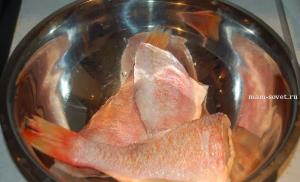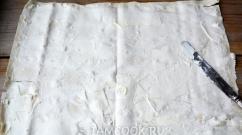Physalia. Medusa Physalia or Portuguese boat
An amazingly beautiful creation of nature - the Portuguese boat (physalia) - is as dangerous as it is attractive.
The Portuguese boat (Latin Physalia physalis) belongs to very primitive, but very interesting invertebrate organisms - siphonophores, close relatives of the jellyfish we all know. This is perhaps one of the most numerous inhabitants of the ocean surface.
In some physalias, the swim bladder protrudes above the surface of the water, acting as a sail. A special trunk goes down from the hydrostatic apparatus (pneumatophore), to which the rest of the colony is attached, their number can reach several hundred. In short, physalia is not a separate organism. Physalia is a colonial form. Physalia's numerous tentacles are equipped with a huge number of stinging cells containing a poisonous secret. The tentacles are practically colorless, they merge with sea water and are difficult to distinguish for swimmers.
The length of the animal (pneumatophore) is about 20 - 30 centimeters. Dactylozoids reach 50 meters in size, but very often they are in a "folded" state.


It is a colony of four types of polyps that coexist together. Each of them performs the function assigned to it.
Thanks to the first polyp - a gas bubble, the beauty of which we admire, the Portuguese boat keeps afloat and can drift in the waters of the ocean. Another polyps, dactylozoids, are trapping tentacles, along the entire enormous length of which stinging cells are located, injecting poison into the prey. Small fish, fry, crustaceans die from it immediately, while the larger ones become paralyzed. Thanks to the trapping tentacles, the caught prey is dragged to the third type of polyps - gastrozoids, which digest food, breaking down proteins, carbohydrates and fats. And the fourth type - gonozoids - perform the function of reproduction.
A Portuguese boat can only move due to the current or wind. In the waters of the Pacific, Atlantic or Indian oceans, you can find a whole flotilla. But sometimes they "blow off" their bubbles and immerse themselves in water to avoid danger. And they have someone to fear: despite the poisonousness, the ships serve as prey for some species of animals. So, for example, sea turtles (loggerhead, head turtle), moonfish or molluscs (nudibranch, yantina) can significantly thin out the ranks of sailboats. But the shepherd fish lives among the long tentacles of physalia as a parasite. The poison does not work on this fish, but it reliably protects against numerous enemies, and the shepherd himself feeds on the remnants of the patron's prey and the dead tips of dactylozoids.

On the surface of the water, this animal is very beautiful. The upper part of it is brightly colored and vaguely resembles the colors of ancient Portuguese sailing ships, hence the name of this animal. If you look closely at the physalia, which rises about 30 cm in length above the surface of the sea, you can see how it shimmers with blue, violet and purple colors due to the reflection of the sun's rays from its edges.

It is not known for certain how physalia reproduces. All that scientists have found out is that physalia reproduces asexually and there are polyps in the colonies that are responsible for reproduction. They are the ones who found new colonies.
Since jellyfish have the ability to reproduce without interruption, a huge number of jellyfish are born in the seas and oceans. It is assumed that this jellyfish is able to reproduce in one more way - there is an opinion that the physalia jellyfish, a Portuguese military ship, dying, throws whole clusters of jellyfish organisms into the ocean, in which sex products are formed, which serve to create new jellyfish.

It is already known that the Portuguese boat belongs to the stinging animals, which means that it has a formidable weapon in its arsenal - stinging cages. These cells in physalia are filled with poison that affects not only animals, but also humans. The poisonous substance that fills the stinging cells has a paralytic effect, causing death in the inhabitants of the oceans who are not fortunate enough to become a victim of physicalia. In humans, the poison of a Portuguese boat causes a burn. It is believed that you cannot wash the burn with fresh water, because whole stinging cells can still remain on the skin, which are quickly destroyed by such water, and it turns out that the poison again gets on the skin.

INTERESTING INFORMATION ABOUT THE PORTUGUESE SHIP ...
Physalia is a joint colony of modified jellyfish and polyps, so closely related to each other that they exhibit all the features of a whole organism.
- This jellyfish was nicknamed "Portuguese boat" by sailors of the 18th century, who talked about a jellyfish that floats like a medieval Portuguese warship.
- The most poisonous species of physalia lives in the Indian and Pacific oceans, its poison is a mortal danger to humans.
- By the way, even in dried form, the tentacles of a Portuguese boat remain very dangerous for humans.
- A burn by a Portuguese boat is comparable in toxicity to the bite of a poisonous snake. But only in rare cases, burns of physalia lead to death.
Physalia now approaches the shore when the wind blows it, then turns the other side and slowly floats away. She is very dangerous - her poison acts quickly and reliably.
& nbsp & nbsp Class - Hydroid& nbsp & nbsp Row - Siphonophores
& nbsp & nbsp Family - Jellyfish
& nbsp & nbsp Genus / Species - Physalia physalia
& nbsp & nbsp Basic data:
SIZE
Length: the body is 9-35 cm, the stinging threads are usually 15 m, in very rare cases they can reach 30 m.
REPRODUCTION
As a rule, they reproduce asexually, by budding. Polyps detach from the main colony to create new ones.
LIFESTYLE
Behavior: drifting out to sea.
Food: all small fish.
Life Expectancy: several months.
RELATED SPECIES
Among the siphonophores, many different species are distinguished, a number of which are known as physalia. In the Mediterranean Sea alone, at least 20 different species have been found. Other jellyfish are also credited to close relatives of physalia.
& nbsp & nbsp The Portuguese boat (another name for physalia) is actually a colony that consists of different types of polyps of the same species. Each polyp has a different function. LIFESTYLE
& nbsp & nbsp Physaliae often swim in warm seas in groups of several thousand individuals. The bubble, transparent and sparkling in the sun, rises about 15 cm above the water and becomes like a small sail. It is surprising that this creature can swim even against the wind, without straying from the intended course. Physalia is usually found near the coast, but during the warmer months of the year, it also willingly drifts towards the Earth's poles. Strong winds that blow towards the coast can even throw this sea creature onto land.
REPRODUCTION
 & nbsp & nbsp It is not known exactly how physalia reproduces. They found out, however, that it reproduces asexually and that there are polyps in the colonies that are responsible for reproduction. They also create new colonies.
& nbsp & nbsp It is not known exactly how physalia reproduces. They found out, however, that it reproduces asexually and that there are polyps in the colonies that are responsible for reproduction. They also create new colonies. & nbsp & nbsp Thus, jellyfish are able to reproduce tirelessly, this explains why such a huge number of jellyfish appear in the seas and oceans. Also, experts have suggested that a Portuguese boat, dying, releases whole clusters of jellyfish individuals into the ocean, which develop reproductive products that serve to form new jellyfish.
SPECIAL BODY
 & nbsp & nbsp The tentacles of the Portuguese ship are armed with a large number of poisonous capsules. They are very small, each with a twisted, empty tube that is covered with delicate hairs. Any touch of the growth, for example, an accidental touch of a passing fish, sets the sting mechanism into action. Fibers with a poisonous substance, like small harpoons, pierce the prey, while remaining connected to the tentacles, their dangerous poison in its composition resembles that of a cobra. This poison kills fish and causes fever, shock and breathing problems in humans.
& nbsp & nbsp The tentacles of the Portuguese ship are armed with a large number of poisonous capsules. They are very small, each with a twisted, empty tube that is covered with delicate hairs. Any touch of the growth, for example, an accidental touch of a passing fish, sets the sting mechanism into action. Fibers with a poisonous substance, like small harpoons, pierce the prey, while remaining connected to the tentacles, their dangerous poison in its composition resembles that of a cobra. This poison kills fish and causes fever, shock and breathing problems in humans. & nbsp & nbsp
DID YOU KNOW THAT ...
- Physalia is a colony of modified polyps and jellyfish, which, being closely and mutually connected with each other, have all the features of a single organism.
- This jellyfish was called "Portuguese ship" by sailors of the 18th century, who told about a creature that floats like a medieval Portuguese warship.
- The most poisonous representative of these coelenterates (stinging) is jellyfish, which can be dangerous even for humans. She lives in the Indian and Pacific Oceans.
CHARACTERISTIC FEATURES OF THE PHISALY (PORTUGUESE SHIP)
& nbsp & nbsp An air bubble (pneumatophore) rises above the surface of the water, which serves as a physalia sail. It is filled with a gas similar in composition to air, but has a higher content of nitrogen and carbon dioxide and a lower amount of oxygen. During a storm, the air from the bubble can be released, and then the physalia is under water. Physalia is characterized by the phenomenon of bioluminescence. She is one of two biological species that produces red light.& nbsp & nbsp Often there is a small fish from a row of perch between the tentacles of the physalia. It is insensitive to its poison and serves as a bait for victims, which physalia draws into the field of action of its tentacles. This fish then feeds on the remains of prey and the dead remains of the tentacles of physalia.

ACCOMMODATION
Lives in warm seas, but is most often found in the bays of the North Atlantic Ocean and the subtropical waters of the Indian and Pacific Oceans.
PRESERVATION
It is not known how the pollution of the seas and the decrease in the number of fish affects the phisalia. However, this is not currently threatened with extinction.
The Portuguese boat is not just a beautiful creation of nature. This is a real killer jellyfish that floats on the surface of the water using a transparent bubble filled with gas.

Initially, Portuguese ships could only be found in the waters of the Gulf Stream, as well as in the tropics of the Indian and Pacific Oceans. But since 1989, this flotilla has entered the Mediterranean Sea. Scientists believe that the main reasons for their resettlement were global warming and the disappearance of food due to large volumes of fish catch.
 Portuguese boat sailing across the ocean
Portuguese boat sailing across the ocean  Tentacles
Tentacles The Portuguese boat fully justifies its name, which it received back in the 15th century in honor of the flotilla of Henry the Navigator. Its upper part, which is a large transparent bubble 15-20 cm in length, is very similar to the stern of a ship. The boat moves only thanks to the wind or the flow of water. Another part of it is hidden under the water - poisonous tentacles. Their length can be up to 30 meters!


They are equipped with stinging cells, which, like small harpoons, pierce prey and inject poison, which is dangerous for humans. After contact with the tentacles, severe burns remain on the skin. To relieve pain and destroy poison, ordinary 3% -5% vinegar helps.
 Burns of a Portuguese boat
Burns of a Portuguese boat 
Physalia is especially dangerous for children, the elderly and people with an increased allergic reaction. There is a known fatal case. Policeman Igor Kuznetsov died of a jellyfish bite this spring, after he ran into her in Egypt while on holiday. He was taken to Moscow by a special flight of the Ministry of Emergencies, but Russian doctors were unable to get him out of his coma. Beauty is sometimes dangerous, deadly.
Small fish and crustaceans meeting with it guarantees a quick death. But there is one fish from the perch order, which is not susceptible to the poison of physalia. The boat and this fish have developed a wonderful strategy of mutual assistance: the fish serves as a bait for future victims of physalia, and itself feeds on the remains of prey and the dead ends of the tentacles of the jellyfish. Here is such a wonderful tandem.
But still, a Portuguese boat can also become someone's dinner. A loggerhead sea turtle and
Class - Hydroid
Detachment - Siphonophores
Family - Jellyfish
Genus / Species - Physalia physalia
Basic data:
SIZE
Length: the body is 9-35 cm long, stinging threads are usually up to 15 m long, in extremely rare cases they can reach a length of 30 m.
REPRODUCTION
Usually, it reproduces asexually, by means of budding. Polyps detach from the main colony in order to then establish new ones.
LIFESTYLE
Behavior: drifting out to sea.
Food: all small fish.
Life Expectancy: several months.
RELATED SPECIES
Among the siphonophores, many different species are distinguished, a number of which are known as physalia. In the Mediterranean alone, at least 20 different species of this jellyfish have been found. Physalia's close relatives include other jellyfish.
"Portuguese boat" or "Portuguese military boat" (this is how the physalia jellyfish is sometimes called because of the resemblance of its body to this ship) is actually a whole colony of different types of polyps of the same species. Each of the polyps in the colony has its own function.
Portuguese boat jellyfish video
PHYSICAL LIFESTYLE
Physalia (see photo) often swim in warm seas in numerous groups, often numbering several thousand jellyfish. The bubble of the jellyfish body, transparent and shining in the sun, rises above the water by about 15 cm and looks like it was poured onto a small sail. Surprisingly, the jellyfish is able to move even against the wind, without deviating from the chosen path. Physalia jellyfish is usually found near the coast, but in the warm season, it willingly moves with the flow towards the earth's poles. Powerful winds blowing from the sea towards the coast can throw this jellyfish onto land.
REPRODUCTION OF THE PORTUGUESE SHIP

It is not known for certain how the physalia jellyfish reproduces. All that scientists have found out is that physalia reproduces asexually and there are polyps in the colonies that are responsible for reproduction. They are the ones who found new colonies.
Since jellyfish have the ability to reproduce without interruption, a huge number of jellyfish are born in the seas and oceans. It is assumed that this jellyfish is able to reproduce in one more way - there is an opinion that the physalia jellyfish, a Portuguese military ship, dying, throws whole clusters of jellyfish organisms into the ocean, in which sex products are formed, which serve to create new jellyfish.
SPECIAL BODY OF PHYSALY

The tentacles of the jellyfish are armed with many poisonous capsules. The capsules are very small, each a curled, empty tube covered with fine hairs. Any contact, for example, with a fish passing by, triggers a stinging mechanism. Physalia venom is similar in composition to cobra venom. Exposure to poison on fish leads to their death; in humans, poisonous burns from a Portuguese boat lead to severe pain, fever, chills, shock and breathing problems.
INTERESTING INFORMATION ABOUT THE PORTUGUESE SHIP ...
- Physalia is a joint colony of modified jellyfish and polyps, so closely related to each other that they exhibit all the features of a whole organism.
- This jellyfish was nicknamed "Portuguese boat" by sailors of the 18th century, who talked about a jellyfish that floats like a medieval Portuguese warship.
- The most poisonous species of physalia lives in the Indian and Pacific Oceans, its poison is a mortal danger to humans.
CHARACTERISTIC FEATURES OF PHISALIA (PORTUGUESE WARSHIP)
An air bag (pneumatophore) rises above the water, which serves as a sail for the physalia. It is filled with a gas that differs from the ambient air by a higher content of nitrogen and carbon dioxide and a lower content of oxygen. During a storm, gas from the bubble can be deflated, due to which the physalia can submerge under water. Physalia is also characterized by the phenomenon of bioluminescence. She is one of only two species that glow red.
Small perches often swim among the tentacles of physalia. These fish are in symbiosis with a Portuguese boat, since they are insensitive to the poison of physalia, they receive protection from enemies from it, as well as food remnants from its table, and the prey itself swims into the tentacles of physalia, seduced by the sight of harmless fish.

- Areal of physalia
WHERE THE PORTUGUESE SHIP DIVES
Physalia jellyfish lives in warm seas and oceans, most often the Portuguese boat can be found in Cuba and in the bays of the North Atlantic Ocean, as well as in the subtropical Pacific and Indian Oceans.
PRESERVATION
It is not known how the pollution of the seas and oceans affects physalia. But at the moment, the extinction of this jellyfish is not threatened.
When going to a seaside resort, people do not think about the dangers that may await them in the waters of the warm sea. One of these dangers is the predatory inhabitants of the sea. Most people believe that only predatory fish are dangerous in the sea. Unfortunately, this is far from the case. The real danger to humans is represented by the so-called "Portuguese ships".
"Portuguese boat" looks like a transparent ridge, which has tentacles. The length of these tentacles can be up to several meters. These inhabitants of the sea got their name for the similarity of their color with the colors of the Portuguese fleet.

These physaliales, dangerous to humans, are drifting invertebrates and belong to the group of siphonophores. In their tentacles there are stinging cells, which contain a portion of a very strong poison. When the tentacle touches the victim's body, stinging cells shoot at it with portions of poison.
People who have survived contact with the tentacles of the "Portuguese boats" say that the sensation of contact with the stinging cells of these physalias can be compared to a strong blow from a whip. A trace appears on the human body, which is a burn. Needless to say, the pain is just awful. Some people lose consciousness, unable to bear such terrible pain. The venom of the predator enters the human bloodstream, after which it affects the lungs and heart of the victim.

Depending on which "Portuguese boat" a person met, there will be different consequences from the ingestion of the predator's poison into the body. The victim may feel shortness of breath, arrhythmia of the heart, etc. If the case is serious, then death is likely.
At the peak of the velvet season, physalia flooded the beaches of Thailand. The authorities of this state urgently close the beaches so as not to endanger the lives of vacationers. By the way, this behavior of "Portuguese ships" is not common, since, as a rule, there are quite a few of them in the waters of this state. The reason for the invasion of stinging invertebrates on the beaches of Thailand is a mystery to scientists.

It should be noted that it is forbidden not only to swim in the waters, where it is full of poisonous marine life, but even to touch the dead predators thrown onto the coastal strip. The fact is that stinging cells with poison continue to act even after the predator's body has died.
Those who came into contact with the "Portuguese ship" must observe safety measures so as not to cause further harm to their health.

There is no need to remove the tentacle from the damaged area. The fact is that if damaged, stinging cells will continue to secrete new portions of poison, which will not add health to the victim. In order to separate the predator's tentacles from the body, it is necessary to water them with fresh water. If that doesn't work, then you need to use food vinegar. The very place of the lesion on the human body cannot be washed with fresh water.
It should be noted that the "Portuguese ships" and "box jellyfish" annually claim about eight dozen human lives. However, with due diligence, the risk of falling prey to toxic marine life can be minimized.
Do you like this article? Then, push.













